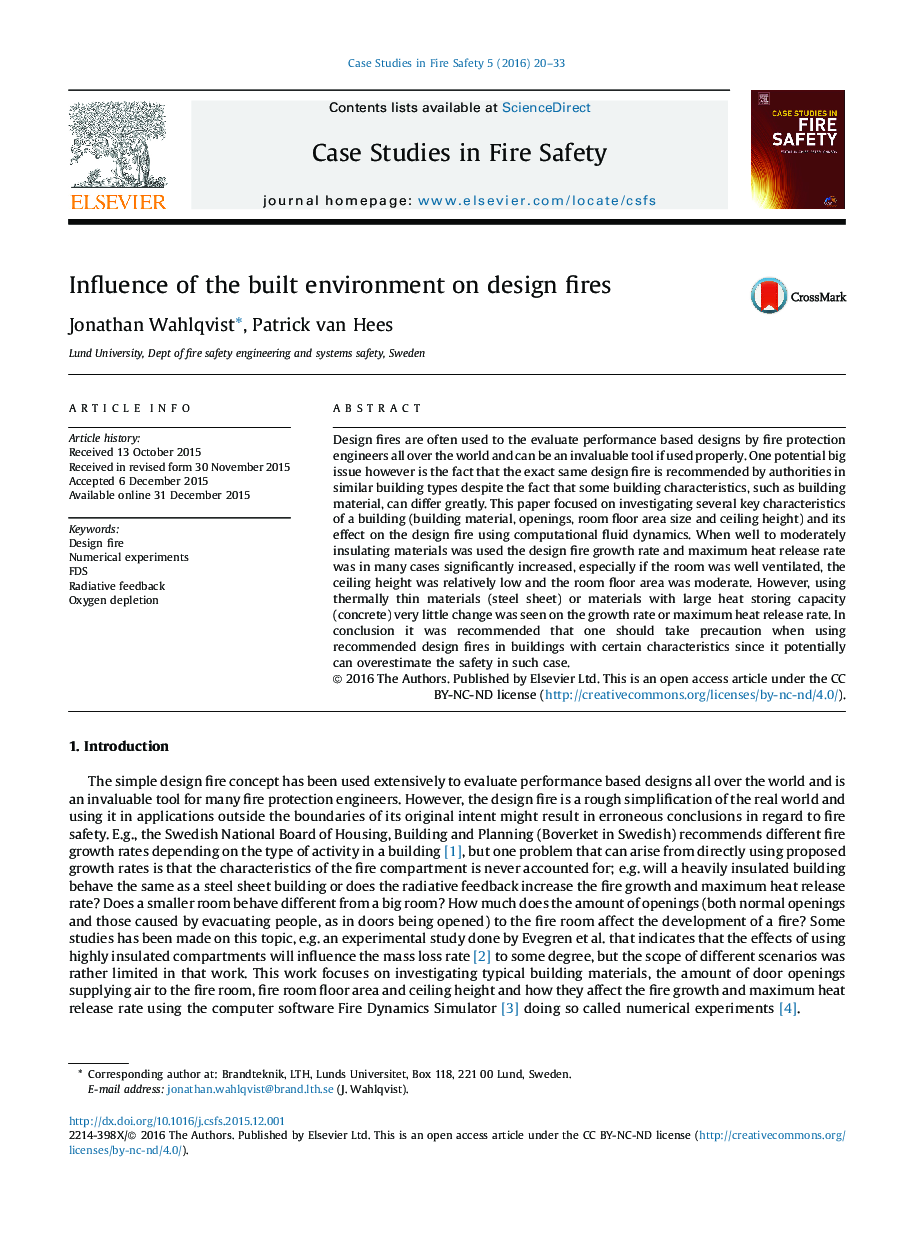| Article ID | Journal | Published Year | Pages | File Type |
|---|---|---|---|---|
| 250553 | Case Studies in Fire Safety | 2016 | 14 Pages |
Design fires are often used to the evaluate performance based designs by fire protection engineers all over the world and can be an invaluable tool if used properly. One potential big issue however is the fact that the exact same design fire is recommended by authorities in similar building types despite the fact that some building characteristics, such as building material, can differ greatly. This paper focused on investigating several key characteristics of a building (building material, openings, room floor area size and ceiling height) and its effect on the design fire using computational fluid dynamics. When well to moderately insulating materials was used the design fire growth rate and maximum heat release rate was in many cases significantly increased, especially if the room was well ventilated, the ceiling height was relatively low and the room floor area was moderate. However, using thermally thin materials (steel sheet) or materials with large heat storing capacity (concrete) very little change was seen on the growth rate or maximum heat release rate. In conclusion it was recommended that one should take precaution when using recommended design fires in buildings with certain characteristics since it potentially can overestimate the safety in such case.
